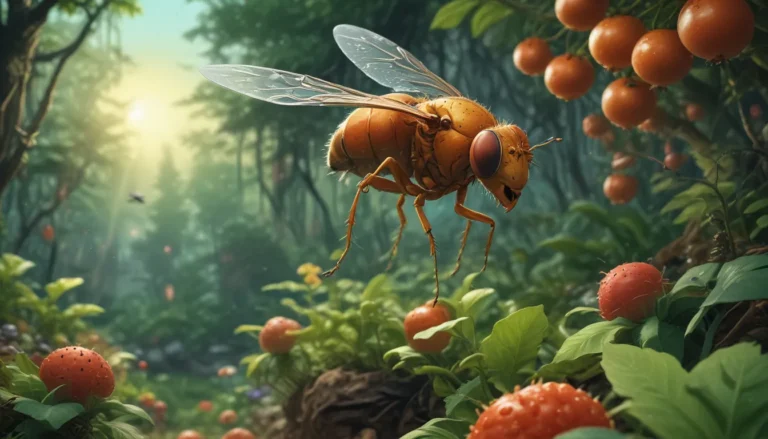Comprehensive Guide on Identifying, Preventing, and Managing Common Blueberry Pests and Diseases

Blueberries are a delightful addition to any garden, but they are not immune to pest infestations and diseases. In this detailed guide, we will explore how to recognize, prevent, and manage the common pests and diseases that can affect blueberry plants. Whether you are a seasoned gardener or a beginner, this article will equip you with valuable information to ensure your blueberry bushes thrive.
Introduction to Blueberry Pests and Diseases
Blueberries are a sought-after treat by both humans and wildlife, making them susceptible to a variety of issues. From insect pests to fungal diseases, there are several threats that can impact the health and productivity of your blueberry plants. By understanding these challenges and taking proactive measures, you can safeguard your harvest and promote the well-being of your blueberry bushes.
Pre-Planning for Healthy Blueberry Plants
The key to preventing pest infestations and diseases in blueberry plants begins with pre-planning and proper care. Here are some essential tips to support the health of your blueberry bushes:
- Choose the Right Soil: Blueberries thrive in acidic, well-draining soil with a pH between 4.0 and 6.0. Ensure your plants are planted in suitable soil conditions to promote healthy growth.
- Prune Regularly: Pruning helps improve air circulation and reduces humidity, preventing fungal diseases. Remove dead or overcrowded branches to maintain plant health.
- Monitor Plant Health: Regularly inspect your blueberry plants for signs of pests or diseases. Observing the leaves, stems, and fruit can help you identify issues early on.
By following these pre-planning steps, you can create a strong foundation for healthy blueberry plants and minimize the risk of pest and disease problems.
Dealing with Local Wildlife
Wildlife creatures such as birds, deer, rabbits, and squirrels are common predators of blueberries. Here are some strategies to deter wildlife from targeting your blueberry plants:
Birds
Birds are notorious for feasting on ripe blueberries. To protect your harvest, consider using bird netting to cover your plants. Ensure the netting is secure to prevent birds from gaining access to the berries.
Deer, Rabbits, and Squirrels
Constructing physical barriers around your blueberry plants can deter deer, rabbits, and squirrels. Options include fabric or plastic netting, electric fencing, or cages made of chicken wire. Choose a method that suits your garden’s needs to keep wildlife at bay.
Managing Insect Pests
A variety of insect pests can pose a threat to blueberry plants. Here are some common pests and effective control measures:
Blueberry Maggots
Blueberry maggots can damage fruit by laying eggs under the skin, leading to internal infestations. Monitoring for adult flies and using traps can help control the population. Consider using fruit fly traps with lures to capture and prevent egg laying.
Blueberry Gall Midge
These tiny insects can feed on young shoots, causing leaf distortion and bud damage. Applying a liquid botanical insecticide can help manage gall midge infestations. Ensure thorough coverage to target the larvae effectively.
Blueberry Stem Borer
Blueberry stem borers tunnel into plant stems, affecting growth and vigor. Pruning infested stems and removing nearby host plants can reduce the risk of stem borer damage. Consider introducing beneficial predators like lacewings to control the borer population.
Japanese Beetles
Japanese beetles are notorious for consuming blueberry foliage, buds, and fruit. Applying beneficial nematodes or milky spore bacteria to the soil can help control beetle larvae. Handpicking adult beetles and drowning them in soapy water is another effective method of beetle management.
Scale
Scale insects feed on old wood, impacting plant health. Pruning and introducing natural predators like lacewings can help control scale populations. Regular pruning of old wood can also reduce the risk of scale infestations.
Yellow-Necked Caterpillars
Yellow-necked caterpillars can strip foliage and damage blueberry plants. Using a biological pesticide like Bacillus thuringiensis (Bt) can effectively target caterpillars while avoiding harm to beneficial insects. Monitor your plants for caterpillar activity and treat promptly to prevent extensive damage.
By implementing these pest management strategies, you can protect your blueberry plants from common insect threats and preserve the health of your crop.
Managing Disease
Several diseases can affect blueberry plants, requiring proper care and preventive measures. Here are common blueberry diseases and tips for disease management:
Anthracnose Ripe Rot
Anthracnose ripe rot is caused by a fungus that thrives in hot, humid conditions. Pruning infected stems and applying a broad-spectrum fungicide can help control the spread of anthracnose. Consider using neem oil concentrate to treat anthracnose infections and prevent future outbreaks.
Botrytis Blight
Botrytis blight, or gray mold, can affect blueberries in cool, wet weather. Pruning and removing infected plant parts are critical for managing botrytis blight. Applying a copper-based fungicide during bloom can help prevent mold infestations and protect plant health.
Cane or Stem Canker
Stem canker is a fungal infection that causes red lesions on plant stems. Selecting resistant blueberry cultivars and removing infected stems are essential for managing stem canker. Avoid planting susceptible varieties and maintain good airflow around plants to reduce fungal growth.
Iron Chlorosis
Iron chlorosis is a nutrient deficiency that results in yellow foliage and stunted growth. Adjusting soil pH and providing adequate iron supplementation can help correct iron chlorosis. Conduct a soil test to determine nutrient levels and adjust accordingly to promote plant health.
Mummy Berry
Mummy berry is a fungal disease that affects blueberry fruit clusters. Removing infected fruit and practicing proper plant hygiene can prevent mummy berry outbreaks. Destroying infected fruiting bodies and maintaining a clean planting area can help eliminate mummy berry risks.
By following these disease management practices, you can safeguard your blueberry plants against common fungal infections and maintain a healthy growing environment.
Conclusion
Growing blueberries can be a rewarding experience, but it comes with challenges such as pest infestations and diseases. By staying vigilant, implementing preventive measures, and taking prompt action when issues arise, you can protect your blueberry plants and enjoy a bountiful harvest. Whether you’re tackling insect pests or fungal diseases, proactive care and effective management strategies are key to promoting plant health and productivity.
Remember, healthy plants start with proper planning and attention to detail. By incorporating these tips into your blueberry care routine, you can create an environment that supports robust growth and minimizes the risk of pest and disease problems.
Do you have any experiences or tips to share about managing blueberry pests and diseases? We’d love to hear from you! Share your insights and solutions for dealing with common blueberry challenges. Together, we can cultivate thriving blueberry plants and enjoy the fruits of our labor.
I hope you found this comprehensive guide on identifying, preventing, and managing common blueberry pests and diseases informative and helpful. By following the tips and strategies outlined in this article, you can protect your blueberry plants and ensure a successful growing season. Happy gardening!





